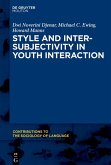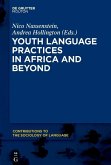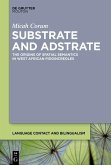This book examines how style and intersubjective meanings emerge through language use. It is innovative in theoretical scope and empirical focus. It brings together insights from discourse-functional linguistics, stylistics, and conversation analysis to understand how language resources are used to enact stances in intersubjective space. While there are numerous studies devoted to youth language, the focus has been mainly on face-to-face interaction. Other types of youth interaction, particularly in mediated forms, have received little attention. This book draws on data from four different text types - conversation, e-forums, comics, and teen fiction - to highlight the multidirectional nature of style construction.
Indonesia provides a rich context for the study of style and intersubjectivity among youth. In constructing style, Indonesian urban youth have been moving away from conventions which emphasized hierarchy and uniformity toward new ways of connecting in intersubjective space. This book analyzes how these new ways are realized in different text types.
This book makes a valuable addition to sociolinguistic literature on youth and language and an essential reading for those interested in Austronesian sociolinguistics.
Dieser Download kann aus rechtlichen Gründen nur mit Rechnungsadresse in A, B, BG, CY, CZ, D, DK, EW, E, FIN, F, GR, HR, H, IRL, I, LT, L, LR, M, NL, PL, P, R, S, SLO, SK ausgeliefert werden.
"The strong point of the book is that the theory is very clearly illustrated with examples from the datasets, whereby complex theoretical concepts are made transparent. This book would, in my view, make suitable reading material for advanced students in sociolinguistics or interaction studies, and also for students interested in Indonesian youth culture. Also for students of literature and genre studies this book can be of interest. This book shows once again how immense the overlap in scope is between the study of everyday language use and literary texts."
Margreet Dorleijn in: Journal of Pragmatics 143 (2019), 28-32
Margreet Dorleijn in: Journal of Pragmatics 143 (2019), 28-32









